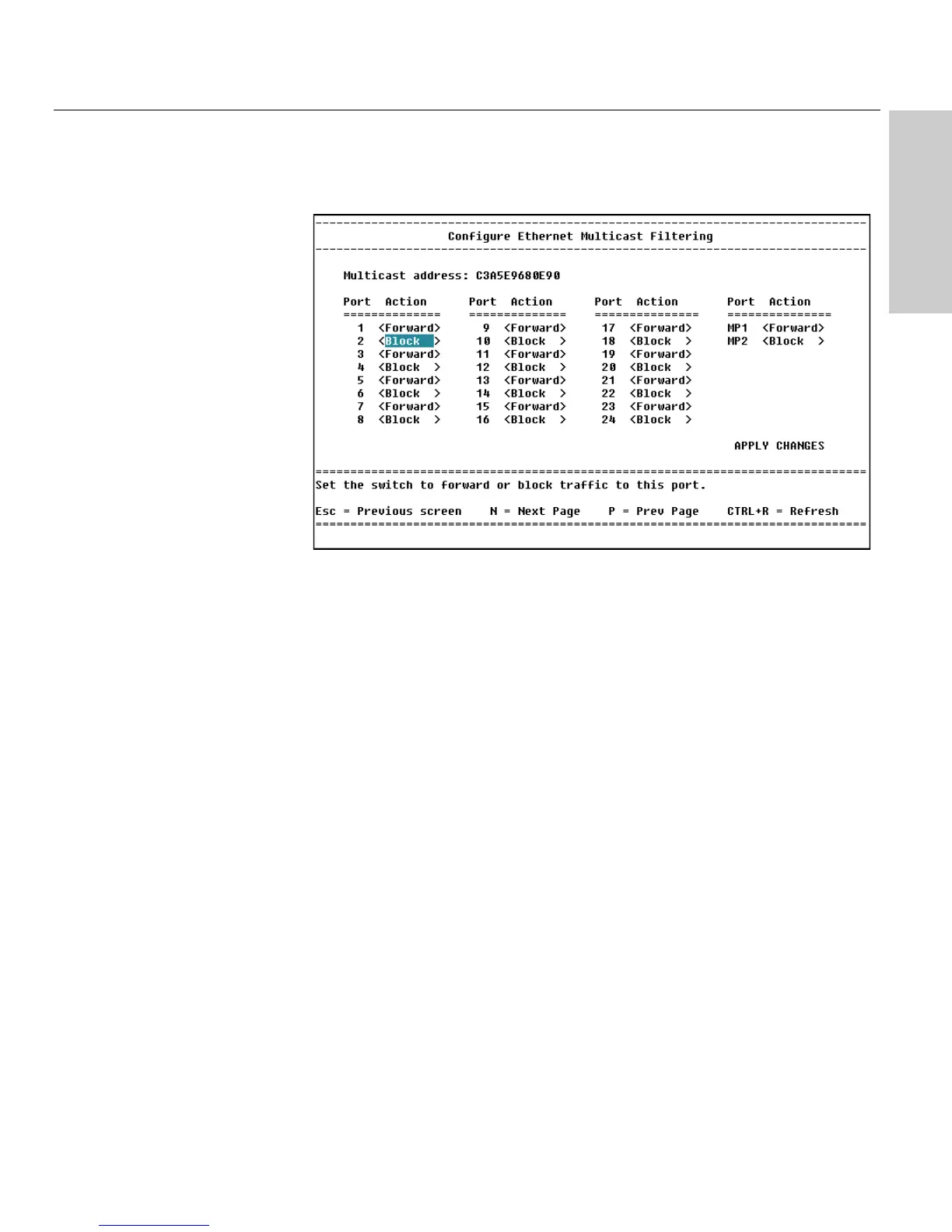73
Using Local Management
CHAPTER 5
Local Management
Ethernet Multicast Filtering (Ports)
Description
Action: Use the z to select whether to block or forward traffic to the
selected port.
APPLY CHANGES: Applies the changes to the multicast filter after you
have configured the ports.
To modify a multicast filter
1 On the right side of the Configure Ethernet Multicast Filter screen use
the arrow keys to select an address from the list. Press e.
2 Decide which ports should receive the multicast traffic by using the
z to set Forward or Block for each port.
3 Select APPLY CHANGES and press e. This activates the changes to
the multicast filter and returns you to the previous screen.
LOCATION
Main Menu
Configure Device
Forwarding and Filtering
Ethernet Multicast Filtering
Multicast Filters Per Port

